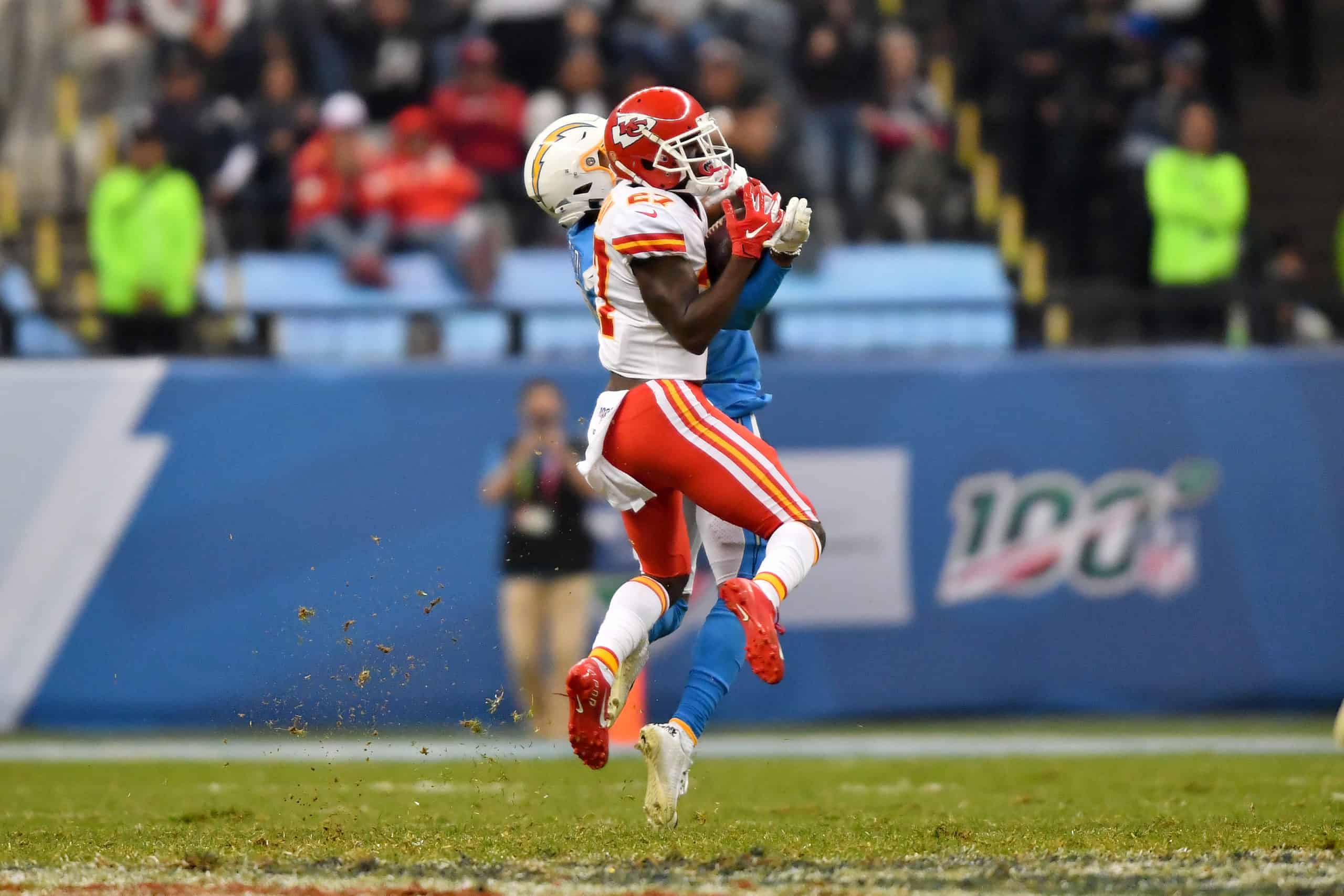With 4:20 to go in the fourth quarter of this past Monday Night Football, Philip Rivers faced a 3rd & 10 from Los Angeles’s own 17-yard line when he heaved a deep pass that was intended for Andre Patton. The ball traveled 50 yards in the air and was intercepted by Chiefs cornerback Rashad Fenton at the Kansas City 33-yard line. This was Rivers’s third interception of the game, although he would go on to throw another backbreaker in the red zone to cap a rough day at the office for the veteran sidearmer.
All interceptions are not created equally, however, and the desperation heave to Patton is what many call an “arm punt,” an interception that is effectively rendered harmless due to how far downfield the opponent assumes possession. Even though this throw will appear in the box score as an interception all the same, surely it is not as harmful as most interceptions. But, how frequently do these so-called arm punts actually occur?
The answer is not often. Since 2016, punts have, on average, netted a 40.8-yard change in field position after the return has been accounted for. Ignoring for a moment that the average return yardage on an interception (14.2) is considerably higher than that on a punt (8.2), it makes sense that we would initially hypothesize that a third down interception should travel 40 yards or more to be considered an arm punt.
Using this criteria, it may be surprising that only 21 such throws have occurred since 2016. But even if we loosen our criteria to a minimum throw depth of 35 yards — only about 13% of punts in that time have traveled 35 yards or less — there are still only 36 such throws. Even under this more generous definition, it’s evident that the majority of third down interceptions are not arm punts. The question, then, is to determine how we should evaluate third down interceptions generally.
With an Expected Points (EP) framework, we can quantify how negatively interceptions affect offenses based on the down in which they occur, regardless of how deep the throw was:
| Down | Average EPA |
|---|---|
| 1 | -4.6 |
| 2 | -4.3 |
| 3 | -3.8 |
It is intuitive that early down interceptions are more costly because of how they deprive teams of additional opportunities to earn a new set of downs. And while third down interceptions are the least harmful from an Expected Points Added (EPA) perspective, they are nearly 13 times worse than the average punt (minus-0.3). This is not surprising when you consider that the average change in field position on a third down interception is just four yards. If we set a minimum throw depth, we find that deep interceptions (35+ yard throw depth) are worth minus-1.5 EPA on average, which is fairly close to the sum total of the average third down incompletion and the average punt (minus-1.3). But, again, these interceptions are few and far between.
We also live in a world where coaches are slowly starting to embrace analytics and we must be conscious of how third down interceptions might cost teams favorable go-for-it situations on fourth. According to Sports Info Solutions’ Win Probability model, 22% of third-down interceptions (regardless of depth) would have led to recommendations to go for it on the subsequent down had they been incompletions instead. (It should be noted that situations in which the pre-snap win probability was less than 20% were excluded.)
Presumably, some of these plays could have resulted in completions had the quarterback targeted another player, although throwing short of the sticks on third down is generally bad practice. Conversely, 40% of third down interceptions since 2016 have been hurried and it’s possible that hanging onto the ball for longer may have resulted in a sack that would have made going for it on fourth down a daunting prospect.
The relationship between third down passing and fourth down decision-making will be an interesting dynamic to monitor moving forward. Once punts cease to be something of a foregone conclusion on fourth downs, it is possible that third down interceptions may be viewed more harshly by Expected Points models once they begin to intake more fourth down attempts. For the time being, it is fair to say that third down interceptions are less harmful than early down gaffes, but it nevertheless seems unwise to recuse quarterbacks from scrutiny based on down.
















